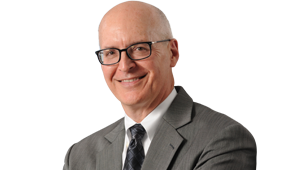Robert Shanks
Executive Vice President and Chief Financial Officer
Ford Motor Company

Ford Motor Company is in a much better financial position today than it was several years ago, with 2012 marking the third consecutive year of $8 billion or more in annual operating profits. Despite this strong bottom-line performance, however, some observers see us as a “tale of two companies.” On the one hand, we are very profitable and generating superb operating margins in Ford’s North American business, while continuing to deliver solid results at the Ford Motor Credit Company as well. On the other hand, we are incurring substantial losses in Europe, saw South American profits decline significantly from 2011, and are continuing to operate around the breakeven point in Asia Pacific and Africa, despite heavy investments for growth in that region.
So how should we think about our 2012 performance and its variability by region in the context of sustainability?
Financial sustainability in our industry can be thought of as the ability to maintain an investment credit rating throughout an economic cycle; to maintain profitability in all years of the cycle; and to provide shareholders with competitive returns on their investment in Ford over the cycle. Two keys to accomplishing this are, first, to have a strong balance sheet that can withstand the stresses of a downturn and, second, to ensure the business is profitable across all regions of the world and across all vehicle segments in which we participate. Obviously, we have more work ahead of us in both of these areas, but we’re clearly much closer to accomplishing both objectives than we ever have been.
It started with us returning to investment grade last year. In the spring of 2012, the second of two major rating agencies brought us back to investment grade level. This was a tremendous validation of the work and sacrifices of so many people. The immediate effect of the upgrade was that it gave us greater flexibility in funding our business, and we already have seen the benefits with lower-cost financing options available to us and to Ford Motor Credit Company. Now, we need to progress even further into investment grade, because eventually there will be another economic downturn, and we don’t want to run the risk of slipping back.
The second opportunity for financial sustainability is to improve the balance of where we generate our profits. In terms of the source of our profitability, the fact remains that, in 2012, we were still largely dependent on the North American market and larger vehicles and trucks.
Certainly, we should celebrate our progress and ensure that we sustain – and strengthen – the position we have built over the years in North America and in larger vehicles and trucks. Our present reliance on this market and these vehicle segments, however, leaves us exposed to changes in the North American economy and to consumer shifts away from larger vehicles and trucks. We experienced the negative consequences of such exposure during the economic recession in the U.S. several years ago, which was exacerbated by American consumers shifting away from larger vehicles.
Our ONE Ford plan will better balance our strength in North America and in the larger vehicle segments by enabling us to deliver substantially greater levels of profitability outside North America and in the small and medium vehicle segments. The plan also gives us the opportunity to grow profitably by participating more fully in the markets and vehicle segments that are expected to be the drivers of growth in our industry over the next decade.
To fully realize a better balanced footprint of profitability, we must strengthen our business in South America by transitioning our product lineup from legacy products to global ONE Ford products, while responding to trade and currency policy changes from major governments in the region. In Europe, we must implement our transformation plan to return to profitability by mid-decade, while closely monitoring the external environment to ensure no further action is required. And in our Asia Pacific and Africa region, our opportunity is to continue to carry out our growth strategy for the largest and fastest-growing region in our industry, with meaningful financial results flowing through to our bottom line.
I’ve been with Ford for 36 years, and the Company has changed enormously over that time. It used to be that the balance sheet was something only the CFO and the CEO cared about. Today, the ONE Ford plan has changed the level of transparency so that everyone on the senior leadership team understands their role in making sure we’ve got a strong Company. We’re also much more proactive in understanding the importance of sustainability in the broadest sense – not only in relation to our products, but also in the quality of the financial results that we derive from them.
The global economy is changing so quickly that it’s impossible to imagine what the auto market of the future will look like. As disposable incomes increase in Brazil, Russia, India, China and other emerging economies, auto sales will continue to boom – and that will have an impact on urban areas that already are congested. Ford is exploring what our role will be in that transformation. This may create new growth opportunities that we don’t understand today in terms of transportation solutions. But whatever those solutions may be, we want to be part of the answer.
I’m not a soothsayer, but looking ahead 20 years, I think you’ll see a very different Ford Motor Company – one that truly is a reflection of the whole world in which we live and operate.










